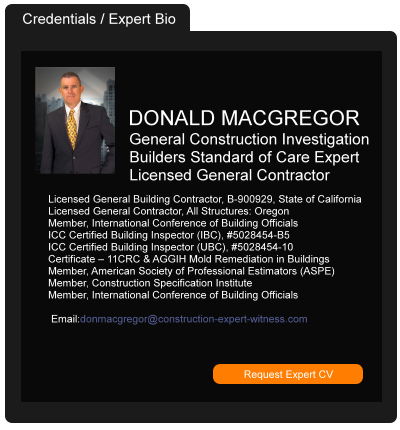Breaking with Tradition, The Current NLRB is on a Rulemaking Tear: Election Procedures, Recognition Bar, and 9(a) Collective Bargaining Relationships
September 09, 2019 —
Keahn Morris, John Bolesta & James Hays - Construction and Infrastructure Law BlogIn its 84-year history, the National Labor Relations Board (NLRB, Board or Agency) has promulgated a very small number of rules pursuant to the Administrative Procedures Act, relying, instead, on individualized adjudications to establish the Board’s legislative policies. However, breaking with that long tradition, the current Board now appears to be on the verge of a formal rulemaking jag for on May 22, the Board released its “Unified Agenda” of anticipated regulatory actions which, in addition to proceeding with rulemaking regarding joint employer standards, announced the Board’s intention to consider formal rulemaking in a number of critical areas. Consistent with that wide-ranging Agenda, on August 12, the Board published a Notice of Proposed Rulemaking (NPRM) over the objection of Democratic appointee, Lauren McFerran, that would amend the Agency’s rules and regulations governing the filing and processing of election petitions in three very important ways. This NPRM, therefore, deserves attention.
The first possible amendment will modify the Board’s administrative election blocking charge practice by establishing a regulation-based vote and impound procedure to be used when a party, typically a union facing possible decertification, files an unfair labor practice (ULP) charge and, based thereon, seeks to block the holding of an election.
The second possible amendment will modify the Board’s current recognition bar case law by codifying prior Board case doctrine and creating a regulation-based requirement of notice of voluntary recognition to affected employees and a 45-day open period within which affected employees may call for an election before that voluntary recognition will be allowed to operate as a bar to employees raising later questions concerning the union’s representative status (QCR).
Reprinted courtesy of Sheppard Mullin attorneys
Keahn Morris,
John Bolesta and
James Hays
Mr. Morris may be contacted at kmorris@sheppardmullin.com
Mr. Bolesta may be contacted at jbolesta@sheppardmullin.com
Mr. Hays may be contacted at jhays@sheppardmullin.com
Read the court decisionRead the full story...Reprinted courtesy of
Illinois Federal Court Determines if Damages Are Too Remote
July 13, 2020 —
Lian Skaf - The Subrogation StrategistForeseeability is a tort concept that tends to permeate several aspects of legal analysis, often causing confusion in litigants’ interpretation of, and courts’ application of, foreseeability to their cases. In Cincinnati Ins. Co. v. Progress Rail Services. Corp., 2020 U.S. Dist. LEXIS 73967 (C.D. Ill.), the United States District Court for the Central District of Illinois took on the task of analyzing a case dealing with foreseeability issues to determine if the defendant owed the plaintiff a duty and if the damages were so remote as to violate public policy. The court held that since the defendant’s actions contributed to the risk of harm to the plaintiff and the facts satisfied the four-prong duty test, the defendant owed the plaintiff’s subrogor a duty of reasonable care. It also held that the plaintiff’s damage claim did not open the defendant up to liability that would violate public policy.
In the case, an employee of defendant Progress Rail Services Corporation (Progress Rail) was operating a crane at Progress Rail’s Galesburg location on May 7, 2018. The employee struck an overhead power line while working, causing a power disruption to nearby businesses. The plaintiff’s subrogor, Midstate Manufacturing Company (Midstate), was one of the affected businesses, reporting that its Amada hydraulic punch was damaged. Midstate submitted a property damage claim to its carrier, Cincinnati Insurance Company (Cincinnati), who reimbursed it under its policy. Subsequent to its payment, Cincinnati filed suit against Progress Rail in Illinois state court. Progress Rail then removed the case to federal court and filed a motion to dismiss.
Read the court decisionRead the full story...Reprinted courtesy of
Lian Skaf, White and Williams LLPMr. Skaf may be contacted at
skafl@whiteandwilliams.com
Additional Insurance Coverage Determined for General Contractor
January 07, 2015 —
Tred R. Eyerly- Insurance Law HawaiiA series of communications requiring the subcontractor to provide additional insured coverage for the contractor were sufficient to fit within the policy's provision identifying additional insureds. KB Home Tucson, Inc. v. The Charter Oak Fire Ins. Co., 2014 Ariz. App. LEXIS 228 (Ariz. Ct. App. Nov. 25, 2014).
KB, the general contractor, hired CRG Construction Co., Inc. in 1999 to perform work at a residential subdivision in Tucson. Charter Oak provided liability coverage for CRG, including additional insured coverage for any person or entity that CRG was obligated to cover under written contract or agreement.
Read the court decisionRead the full story...Reprinted courtesy of
Tred R. Eyerly, Insurance Law HawaiiMr. Eyerly may be contacted at
te@hawaiilawyer.com
Broken Buildings: Legal Rights and Remedies in the Wake of a Collapse
October 11, 2021 —
David J. Pfeffer - Construction ExecutiveA tragedy transpired on June 24 in Surfside, Florida, when the Champlain Towers South suddenly fell, becoming one of the country’s most deadly unintentional building collapses. It is imperative that construction industry professionals be aware of the legal issues that are raised by such ill-fated events.
Who Is Held Responsible?
Who can be held responsible for such disasters lies among several possible parties:
- The building’s design professionals, particularly its architects and structural engineers. They are charged with ensuring that the building’s design is safe. They must take many factors into account, including, but not limited to, the materials that are used, the foundation, the weight and the height.
- General contractors and the subcontractors. General contractors implement the design created by the architects and engineers and are responsible for appropriate materials. The general contractor also supervises the subcontractors aiding with multiple areas of the building’s construction and which also share the responsibility of executing the design and maintaining the building’s structural integrity.
Reprinted courtesy of
David J. Pfeffer, Construction Executive, a publication of Associated Builders and Contractors. All rights reserved.
Read the court decisionRead the full story...Reprinted courtesy of
Mr. Pfeffer may be contacted at
dpfeffer@tarterkrinsky.com
Northern District of Mississippi Finds That Non-Work Property Damages Are Not Subject to AIA’s Waiver of Subrogation Clause
July 11, 2018 —
Shannon M. Warren - The Subrogation StrategistIn recent months, the Northern District of Mississippi has grappled with how to interpret waivers of subrogation in American Institute of Architects (AIA) construction industry contracts and, specifically, how they apply to work versus non-work property. The distinction between work and non-work property has been commonly litigated and remains a hotly debated topic when handling subrogation claims involving construction defects.
In Liberty Mutual Fire Ins. Co. v. Fowlkes Plumbing, 2018 U.S. Dist. LEXIS 23515 (February 12, 2018), a fire consumed the entire insured risk when one of the defendants was performing window restoration services. Subsequently, the insured’s subrogated insurer filed suit against several defendants involved in the construction project at issue. In response to the defendants’ motion for summary judgment, the District Court for the Northern District of Mississippi considered whether the waiver of subrogation clause in AIA contract form A201-2007 precluded the subrogated insurer from recovering damages from the defendants. The court held that the waiver of subrogation provision contained in AIA document A201-2007 barred the insurer from recovering for damages to the work itself, but did not apply to non-work property.
Read the court decisionRead the full story...Reprinted courtesy of
Shannon M. Warren, White and Williams LLPMs. Warren may be contacted at
warrens@whiteandwilliams.com
Newark Trial Team Obtains Affirmance of Summary Judgment for General Contractor Client
January 21, 2025 —
Lewis Brisbois NewsroomNewark, N.J. (December 31, 2024) - Days after
obtaining an Appellate Division victory affirming a “no cause” jury verdict, Newark Partner Afsha Noran and Managing Partner Colin Hackett obtained a
second appellate court victory affirming a trial court's dismissal of a complaint against another firm client, a general contractor.
The team had previously obtained summary judgment at the trial level on the grounds plaintiff could not establish a prima facie case against the client. The plaintiff appealed the grant of summary judgment and dismissal of her claim to the Appellate Division.
Read the court decisionRead the full story...Reprinted courtesy of
Lewis Brisbois
EEOC Focuses on Eliminating Harassment, Recruitment and Hiring Barriers in the Construction Industry
September 09, 2024 —
Aaron C. Schlesinger & Stephen E. Irving - Peckar & Abramson, P.C.The
Equal Employment Opportunity Commission (EEOC), whose mission is to enforce the nation’s anti-discrimination laws, released new guidelines on June 18, 2024, entitled
Promising Practices for Preventing Harassment in the Construction Industry. The guidelines are in support of its Strategic Enforcement Plan for the fiscal years 2024-2028 for combatting systemic harassment and eliminating barriers in recruitment and hiring in the construction industry. With these guidelines, the EEOC has identified harassment as an ongoing issue in the construction industry, and that immediate attention and resolution is required.
The EEOC specifically recommends that the following five core principles that it has found effective in preventing and addressing harassment be implemented by construction industry employers:
- Committed and engaged leadership;
- Consistent and demonstrated accountability;
- Strong and comprehensive harassment policies;
- Trusted and accessible complaint procedures; and
- Regular, interactive training tailored to the audience and the organization.
Reprinted courtesy of
Aaron C. Schlesinger, Peckar & Abramson, P.C. and
Stephen E. Irving, Peckar & Abramson, P.C.
Mr. Schlesinger may be contacted at aschlesinger@pecklaw.com
Mr. Irving may be contacted at sirving@pecklaw.com
Read the court decisionRead the full story...Reprinted courtesy of
Almost Half of Homes in New York and D.C. Are Now Losing Value
September 03, 2015 —
Prashant Gopal – BloombergAlmost half of single-family houses in the New York and Washington metropolitan areas are losing value, a sign that buyers' tolerance for high prices in many large U.S. cities may be reaching a limit.
The values of 45 percent of houses in both the Washington and New York areas slumped by at least 2 percent in June from a year earlier, according to a new index created by Allan Weiss, co-founder of the Case-Shiller home price indexes. In June 2014, only 15 percent of Washington residences dropped in value, while 20 percent fell in New York. Because the index is of only single-family homes, it doesn't include Manhattan. More properties also were in decline in Los Angeles, Chicago, Phoenix and Miami.
Read the court decisionRead the full story...Reprinted courtesy of
Prashant Gopal, Bloomberg


































































